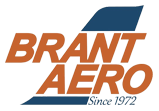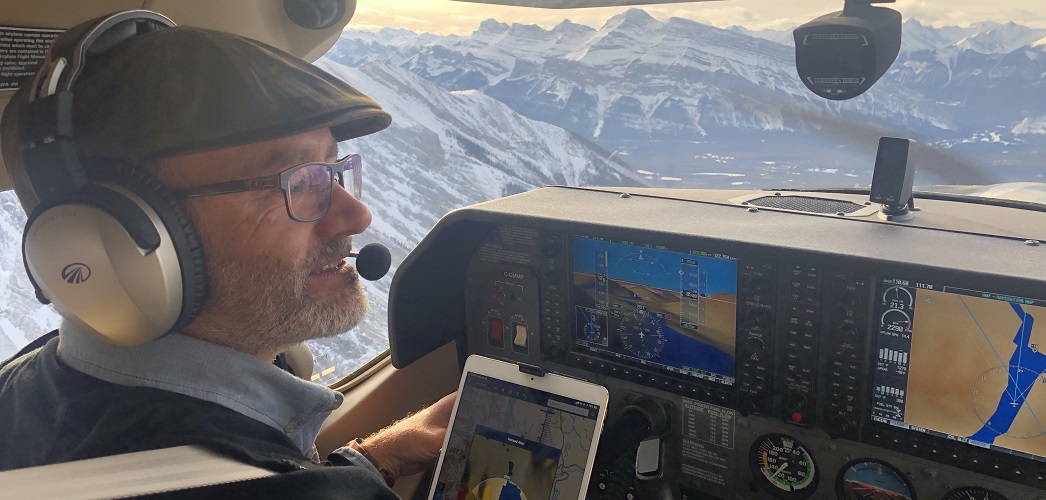ADS-B: Implementation in Canada vs. United States
Most of us are aware of the ADS-B out mandate in the United States. However, it’s been more recently announced that an ADS-B out mandate is coming to Canada too.
Despite many similarities, the ADS-B requirements between Canada and the United States are different. Ensure your Canadian aircraft complies with Canadian rules! This article will help provide more insight into the similarities and differences between both countries to ensure you know the ins-and-outs of ADS-B
What’s an ADS-B System?
Let’s back up a step first and discuss the basics of what ADS-B actually is. It stands for Automatic Dependent Surveillance Broadcast.
Automatic – The system automatically transmits out without any action required by you; just turn it on and go.
Dependant – The system is dependent on a reliable source of GPS data to determine its current position and velocity.
Surveillance – Aircraft and position information are output from the system approximately once per second to allow for real-time surveillance.
Broadcast – The information is broadcast to anyone with the appropriate receiver equipment, including aircraft with ADS-B in capability and ATC in areas of ADS-B coverage.
How Canadian and American ADS-B Rules Differ
If you’ve already installed a system to meet the United States’ mandate, it looks like you’re ahead of the game in Canada, right? Not necessarily.
There are two main differences between the Canadian and United States ADS-B requirements that you’ll want to keep in mind if you’re looking to comply with the mandates in both countries:
- 978 UAT systems are ONLY valid in the United States.
- Diversity (top and bottom mounted antennae) is required for all ADS-B installations to be valid in Canada.
Here are some of the highlights, features and key dates from each of the mandates in both countries.
United States of America
ADS-B Out is mandated in any aircraft operating in controlled airspace in the United States by January 1, 2020. They have decided to adopt a ground-based system which supports two different ADS-B in/out solutions: 978 UAT and 1090ES. Both systems transmit identical information for ADS-B out, but can receive different ADS-B In information and have different limitations.
UAT (Universal Access Transceiver) ADS-B in information includes:
- TIS-B (traffic information service – broadcast), where any ADS-B ground station will re-broadcast the position information of any non-ADS-B equipped aircraft picked up by traditional ATC radar systems.
- ADS-R (Automatic dependant surveillance – rebroadcast) from ground stations will give position information on both 978 UAT and 1090ES equipped aircraft picked up by the ground station to ensure that users of both systems can see each other.
- FIS-B (flight information services – broadcast) provides free weather and aeronautical information such as AIRMETs, SIGMETs, NOTAMs, PIREPs etc.
- Positions from air-to-air transmissions received from nearby 978 UAT equipped aircraft.
There are two key limitations on 978 UAT systems. First, it’s only available in the United States. Secondly, 978 UAT out is only approved on aircraft which operate below 18,000ft, so if you plan on operating above 18,000ft and/or you need ADS-B capabilities outside of the United States, you need to go to a 1090ES system.
1090ES (Extended Squitter) is the internationally recognized standard for ADS-B and is approved for operation at all altitudes within the United States. If you opt for an ADS-B in solution for 1090ES, you can receive TIS-B, ADS-R and air-to-air transmissions from other 1090ES equipped aircraft. However, you cannot receive any FIS-B information, as that is an exclusive feature of 978 UAT systems.
Because the United States uses a ground-based ADS-B system, diversity (top and bottom mounted antennae) is not required for ADS-B compliance. This is where you may run into problems with the upcoming mandate in Canada.
Canada
Canada has opted into a joint-venture satellite-based ADS-B system with a company called Aireon which is designed to provide global ADS-B coverage without the use of ground stations. Because the belly antenna used in legacy transponder installations provide poor signal returns to the satellite constellation, diversity is a must to comply with the Canadian mandate.
The proposed mandate is being implemented in three phases:
- Phase 1 – Class A airspace above FL180: 25 February 2021.
- Phase 2 – Class B airspace between 12,500 and FL180: 27 January 2022.
- Phase 3 – Controlled airspace below 12,500ft as required, no sooner than 2023 (no specific date has been provided for this phase as of October 2019).
The Phase 3 implementation to mandate ADS-B below 12,500’ is an effort to help give ATC eyes near controlled airports and busy air traffic corridors which currently have little to no traditional radar coverage (ie: Timmins). Areas which currently have extensive radar coverage such as southwestern Ontario **may** not be included in this mandate, although Nav Canada has yet to confirm any specific areas where the mandate will or will not take effect.
Unlike the United States, there will be no ADS-B In available in Canada from ground stations or being rebroadcast from the satellites. You will be limited to receiving air-to-air transmissions for ADS-B traffic throughout Canada. The exception to this is around Canada’s southern border where you may pick up ADS-B ground stations from the USA.
In summary, the requirement of antenna diversity in Canada has created additional complications when planning your ADS-B solution, however if you fly primarily below 12,500’ you might not have to be as concerned about it as you think!
Contact Brant Aero today for further ADS-B details and options to make sure you are ready for wherever your missions take you.
 Author Profile: Josh Pegg graduated from Canadore College in 2008 as an Avionics Maintenance Technician and started working at Brant Aero in May of that year. In addition to being qualified as an Aircraft Maintenance Engineer, Josh is the Avionics Sales Manager for Brant Aero.
Author Profile: Josh Pegg graduated from Canadore College in 2008 as an Avionics Maintenance Technician and started working at Brant Aero in May of that year. In addition to being qualified as an Aircraft Maintenance Engineer, Josh is the Avionics Sales Manager for Brant Aero.





Jeff Nagy
Dec, 19, 2019Excellent article, thanks for the clear information!
Will mode C or mode S transponders become obsolete after full ADS-B implementation?
Dominique Lemieux
Jan, 22, 2020Hi Jeff,
ADS-B won’t be replacing Mode A or C Transponder functions, but rather augmenting them. ADS-B adds a GPS signal to your existing Transponder information that is sent to ATC. This allows them to get an accurate update on your position in real time.
As for Mode S. ADS-B will be fully replacing the Mode S capability as it is much more capable.
Thank you,
Brant Aero